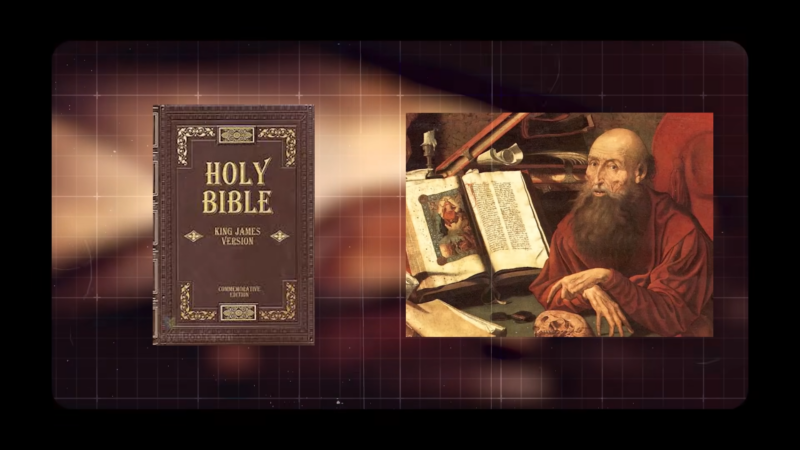The Ethiopian Bible and the King James Version (KJV) are two of the most influential religious texts in Christianity.
The Ethiopian Bible, revered in the Ethiopian Orthodox Church, holds a unique place due to its antiquity and comprehensive canon.
The KJV, commissioned by King James I, is esteemed for its literary elegance and widespread use in the English-speaking world.
Do you know the differences between these two?
Let us talk about them.
How They Came to Be?
The Ethiopian Bible, also known as the Ethiopian Orthodox Tewahedo Church Bible, is one of the oldest and most complete biblical canons in existence.
Its origins are deeply rooted in the early Christian traditions of Ethiopia, with texts written in Ge’ez, an ancient Semitic language.
The Ethiopian Bible is believed to be approximately 800 years older than the King James Version, with some manuscripts carbon-dated to the early centuries of Christianity.
Its historical context is enriched by Ethiopia’s long-standing Christian heritage, which dates back to the 4th century when Christianity was declared the state religion.
The King James Version, commissioned by King James I of England in 1604 and published in 1611, emerged during a period of significant religious and political change in Europe.
It was created by a group of scholars and theologians who aimed to produce an English translation of the Bible that would be both accurate and accessible.
The KJV’s creation was motivated by the need for a standardized and authoritative English Bible amid the religious reforms of the Protestant Reformation.
Canonical Differences

The Ethiopian Bible is notable for its extensive canon, containing between 81 and 88 books, which is far more than the KJV. An expanded canon includes several texts not present in the KJV, such as the:
- Book of Enoch
- Book of Esdras
- Book of Baruch
- Three books of Maccabee
These additional books provide a broader theological and historical perspective, reflecting the unique traditions and beliefs of the Ethiopian Orthodox Church.
The King James Version comprises 66 books, adhering to the Protestant canon established during the Reformation.
The canon excludes several books found in the Ethiopian Bible and the Catholic Bible, such as the Deuterocanonical books, like:
- Tobit
- Judith
- Wisdom of Solomon
The KJV’s selection of texts was influenced by the desire to align with the Hebrew Bible (Tanakh) for the Old Testament and to maintain doctrinal purity and consistency for the New Testament.
The exclusion of certain books reflects the theological and doctrinal priorities of the Protestant Reformation, emphasizing sola scriptura (scripture alone) as the basis for faith and practice.
Language and Translation
The Ethiopian Bible is written in Ge’ez, an ancient South Semitic language that was once the liturgical language of Ethiopia.
Ge’ez is no longer spoken but remains the liturgical language of the Ethiopian Orthodox Church.
The King James Version was translated into Early Modern English from Hebrew, Aramaic, and Greek texts.
The translation process involved a group of 47 scholars who worked meticulously to ensure consistency and accuracy.
They aimed to produce a Bible that was both faithful to the original languages and accessible to English speakers.
Physical and Manuscript Differences
The Ethiopian Bible is renowned for its manuscripts, particularly the Garima Gospels, which are considered some of the oldest and most beautifully illustrated Christian manuscripts in existence.
These manuscripts are adorned with detailed illustrations and vibrant colors, showcasing the artistry and devotion of Ethiopian scribes.
The Garima Gospels, preserved in a monastery in Ethiopia, are a testament to the meticulous care and reverence with which these texts have been treated.
The King James Version, in contrast, lacks the illustrative richness of the Ethiopian Bible.
It was printed and distributed widely, making it one of the most accessible versions of the Bible.
The KJV’s physical form has varied over the centuries, from early printed editions to modern digital formats.
While it does not feature the same level of manuscript artistry, its widespread distribution and numerous editions reflect its enduring popularity and influence.
Theological and Cultural Impact
@memphisconjure These are just some of the differences between the King James and Ethiopian bibles. #blackchristiantiktok #bible #kingjames
The Ethiopian Bible holds significant theological and cultural importance within Ethiopian Christianity.
It depicts Jesus and his family as Middle Eastern people of color, offering a perspective that aligns with Ethiopia’s own cultural and ethnic heritage.
The Ethiopian Bible’s theological and cultural impact is evident in its influence on Ethiopian religious practices, art, and literature.
The King James Version has had a profound influence on English-speaking Christianity.
Its theological impact is seen in shaping Protestant doctrine and practice, while its cultural impact extends to its contribution to English literature and language.
The KJV has been propagated through European colonial efforts, spreading its influence globally.
The KJV’s theological and cultural significance is vast, reflecting its central role in the religious and cultural life of many English-speaking communities.
The Bottom Line
The Ethiopian Bible and the King James Version represent two distinct yet profoundly influential biblical traditions.
Both Bibles contribute uniquely to Christianity and world heritage, reflecting how biblical texts have been preserved, interpreted, and cherished across different cultures and historical contexts.
